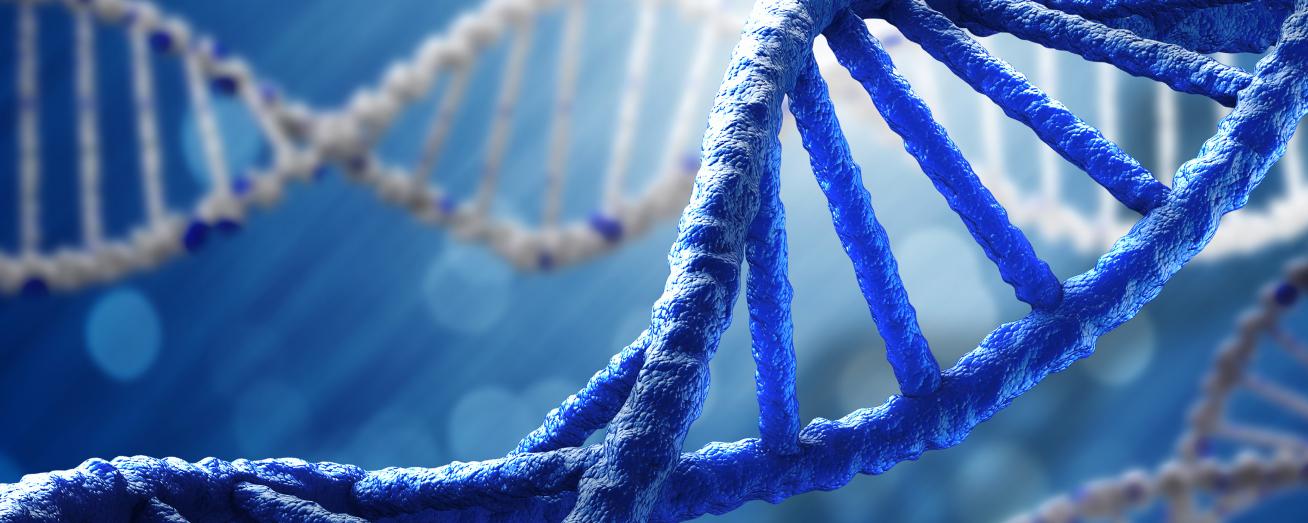Coeliac disease has a complex pathology resulting from interaction between a number of genetic and exogenous factors.
Genetic factors
A high incidence of coeliac disease within affected families (approximately 10% among first-degree relatives and 80% among twins) suggests a genetic involvement in the pathogenesis of coeliac disease. An important genetic factor is the human leukocyte antigen (HLA) system, a gene complex whose task is to recognise foreign molecules. 90% of coeliac patients carry genes encoding HLA DQ2 whilst most of the remainder carry the HLA DQ8 haplotype [1]. Although these are necessary for the disease to develop, they are not solely responsible for it. It is known that these genes are also present in up to 40% of individuals in Western populations, however, the frequency is population dependent [2]. Genome wide studies have also demonstrated that 39 non-HLA regions are associated with an increased risk of coeliac disease [3].
Exogenous factors
The presence of gluten in the diet is clearly a pre-requisite for the development of coeliac disease. People with coeliac disease develop an immune response to some, but not all gluten proteins in wheat [4]. Studies have failed to show that breastfeeding has an effect on the incidence of coeliac disease [5]. A high quantity of gluten ingestion has been proposed as a proposed risk factor for coeliac disease, but current studies are conflicting. Currently, there are a lack of prevention strategies, with gluten being suggested to be consumed at small amounts at initial introduction, suggested to be commenced between 4 to 12 months of age [6]. Other risk factors, such as mode of delivery [7,8], or season of birth [9,10] have also been proposed in the pathogenesis of coeliac disease, as well as gastrointestinal infections [11].
Connection to other diseases
There are some autoimmune diseases, e.g. Type 1 diabetes, that have a high occurrence among coeliac disease patients when compared to non-affected persons. For these conditions, screening is advisable in order to detect possible coeliac disease, even if there are no clear symptoms.
Reference
- Karrell K, Louka AS, Moodie SJ et al. HLA types in celiac disease patients not carrying the DQA1*05-DQB1*02 (DQ2) hererodimer: results from the European Genetics Cluster on Celiac Disease. Hum Immunol 2003; 64:469-77
- Abadie V, Sollid LM, Barreiro LB et al. Integration of genetic and immunological insights into a model of celiac disease pathogenesis. Annu Rev Immunol 2011; 29:493-525
- Gutierrez-Achury J, Zhernakova A, Pulit SL, et al. Fine mapping in the MHC region accounts for 18% additional genetic risk for celiac disease. Nat Genet 2015; 47: 577–78
- Huebener S, Tanaka CK, Uhde M, et al. Specific nongluten proteins of wheat are novel target antigens in celiac disease humoral response. J Proteome Res 2015; 14: 503–11
- Welander A, Tjernberg AR, Montgomery SM, Ludvigsson J, Ludvigsson JF. Infectious disease and risk of later celiac disease in childhood. Pediatrics 2010; 125: e530–36
- Szajewska H, Shamir R, Mearin L, et al. Gluten introduction and the risk of coeliac disease: a position paper by the European Society for Pediatric Gastroenterology, Hepatology, and Nutrition. J Pediatr Gastroenterol Nutr 2016; 62: 507–13
- Mårild K, Stephansson O, Montgomery S, Murray JA, et al. Pregnancy outcome and risk of celiac disease in offspring: a nationwide case-control study. Gastroenterology 2012; 142: 39–45
- Lionetti E, Castellaneta S, Francavilla R, et alPulvirenti A, Catassi C, Mode of delivery and risk of celiac disease: risk of celiac disease and age at gluten introduction cohort study. J Pediatr 2017; 184: 81–86
- Lebwohl B, Green PH, Murray JA, et al. Season of birth in a nationwide cohort of coeliac disease patients. Arch Dis Child 2013; 98: 48–51
- Tanpowpong P, Obuch JC, Jiang H, et al. Multicenter study on season of birth and celiac disease: evidence for a new theoretical model of pathogenesis. J Pediatr 2013; 162: 501–04
- Stene LC, Honeyman MC, Hoffenberg EJ, et al. Rotavirus infection frequency and risk of celiac disease autoimmunity in early childhood: a longitudinal study. Am J Gastroenterol 2006; 101: 2333–40
